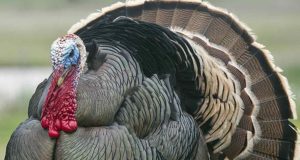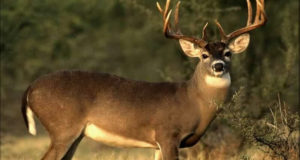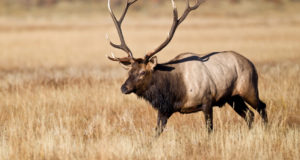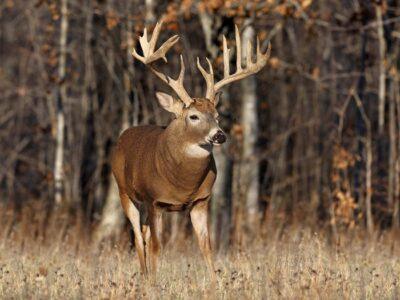
Image source: Legacyranch.us
It is that time of year again. The days start getting cooler and every morning you wake up and walk outside to see if the leaves are changing colors. You are starting to dream of chilly misty mornings sitting out on the edge of a field, your rifle cradled in your arms, waiting patiently for that trophy buck to saunter by.
Birds twitter. A squirrel scolds. Are you ready? When that well-muscled buck steps into the field and raises his antlered head, will you have the skills needed to go up against his wild wit and instinct? Will you have the marksmanship skills for those few seconds for the perfect shot?
As the weather cools a little and the birds begin to fly south, it is the perfect time to head to the range and start honing your marksmanship skills. Leaving shooting practice to the weekend before opening day leads to unpredictable results. You’ll want to double check then that your rifle is zeroed of course, but the more time you take earlier in the year, the better.
(The following advice can go a long way toward enhancing your shooting skills in the field, but please be sure to practice knowledgeable gun safety at all times.)
While range time isn’t necessarily the only way to improve your marksmanship skills, it probably is the most important investment you can make. The more ammo you send down range, the more comfortable you will feel with your rifle. If you have the funds and time, purchase several different kinds of ammunition to see which your rifle prefers. Without getting into the physics and ballistics of it, different bores, barrel contours and rifle twists shoot better with different bullet types and weights. So, your rifle will tend to prefer one ammo over another. Once you decide on a load and get down to the business of practicing your accuracy in earnest, be sure to have two boxes of the same kind of ammo as it’s always best to shoot at least a box of the exact same kind of ammo you will be taking hunting.
Practice Breathing While Aiming
At the start, always shoot off of a bench or rest to ensure your rifle is accurately zeroed. If you’re having trouble zeroing, try moving your target in closer or have a friend spot for you. Once zeroed, move off of the bench and practice shooting in all the positions you might find yourself in while hunting. Practice standing, kneeling, prone and even sitting. In each of these positions, use your breathing and bones (not muscles) to support and stabilize your rifle. Look up shooting positions online to see some good pictures of how you can prop your rifle up mostly with your bones so you can relax, minimize the quivering of muscle fibers, and have your rifle deliver a round to the same spot every time you squeeze the trigger.
Learn The Secrets Of A Veteran Hunter As He Demonstrates How To Quickly Field-Dress Game
For breathing, settle your rifle and take a few relaxed breaths in and out. Then on the next breath, breathe in and exhale slowly. At the point where you will switch to inhaling, pause for a moment and your rifle’s sights or optics will virtually stand still. Squeeze the trigger evenly. Don’t force the breathing, but rather work at it in a relaxed manner. While you won’t have the time to do this entire sequence while hunting, making quiet relaxed breathing a shooting habit will help you settle your rifle quickly when your shot counts.
Clothes Can Make A Big Difference
Another good thing to do once the weather cools down is to deck yourself out in your hunting attire and gear. Take with you to the range anything you will be wearing or carrying when you hunt. Firing a rifle with a T-shirt-covered shoulder and a winter jacket-padded shoulder can lead to two dramatically different results. Gloves, hats, glasses and any other hunting attire should be worn when at the range now. Become familiar with how your rifle feels against your shoulder, where your cheek falls on your stock and how your hand and fingers fit around the grip and trigger. You’ll want this feel to become second nature, so you naturally place your rifle against your shoulder and face in the exact same place every time.
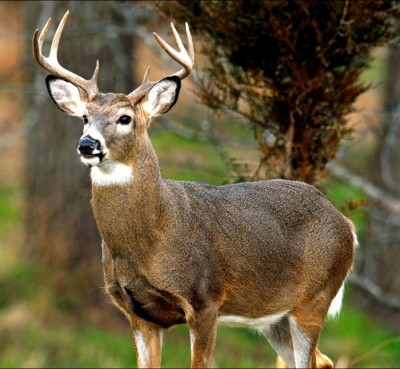 This also will be the time to evaluate if you have developed a flinch. Deer rifles can deliver quite a kick and it’s not uncommon to come back from the range sporting a black and blue shoulder. Anticipating the recoil can affect your shooting accuracy significantly. To check if you are anticipating the recoil, have a friend place a snap cap in among your other rounds in a full clip. As you cycle through the rounds, your body will do naturally with the snap cap what it does with the other rounds. You’ll quickly be able to determine if you’ve developed a flinch problem. Though curing a flinch problem can be tricky, one way to do it is to move to a smaller caliber rifle for a while. Try shooting a .223 or .243 to help you relearn to tolerate recoil again. Once you improve, move back to your deer rifle.
This also will be the time to evaluate if you have developed a flinch. Deer rifles can deliver quite a kick and it’s not uncommon to come back from the range sporting a black and blue shoulder. Anticipating the recoil can affect your shooting accuracy significantly. To check if you are anticipating the recoil, have a friend place a snap cap in among your other rounds in a full clip. As you cycle through the rounds, your body will do naturally with the snap cap what it does with the other rounds. You’ll quickly be able to determine if you’ve developed a flinch problem. Though curing a flinch problem can be tricky, one way to do it is to move to a smaller caliber rifle for a while. Try shooting a .223 or .243 to help you relearn to tolerate recoil again. Once you improve, move back to your deer rifle.
While range time is important, it can quickly become expensive and finding enough time to load the car, travel to the range and shoot can be difficult. But you can work on your trigger squeeze, sight picture and breathing from home, too. Here is where snap caps can come in handy. Practice dry firing. Set up a target and then go through each snap cap as if it were a live round. If you don’t have the room to set a target out 100 yards, draw or print out a much smaller target (one that appears to be the same size as a 100-yard target when set up at 25 or so yards). Then you can practice your trigger squeeze, sight picture and breathing. Pay attention to your surroundings. Especially when you are around other people or near buildings, practice gun safety at all times.
While luck seems to play a part in hunting, you can increase your chances of success by working on your marksmanship skills ahead of time. And who wouldn’t want to spend these first days of the fall season out at the range, breathing gunsmoke and cradling the smooth wood and cool metal of one’s deer rifle. Happy hunting!
What are your firing range and hunting preparation tips? Leave your reply in the section below:
 Off The Grid News Better Ideas For Off The Grid Living
Off The Grid News Better Ideas For Off The Grid Living


